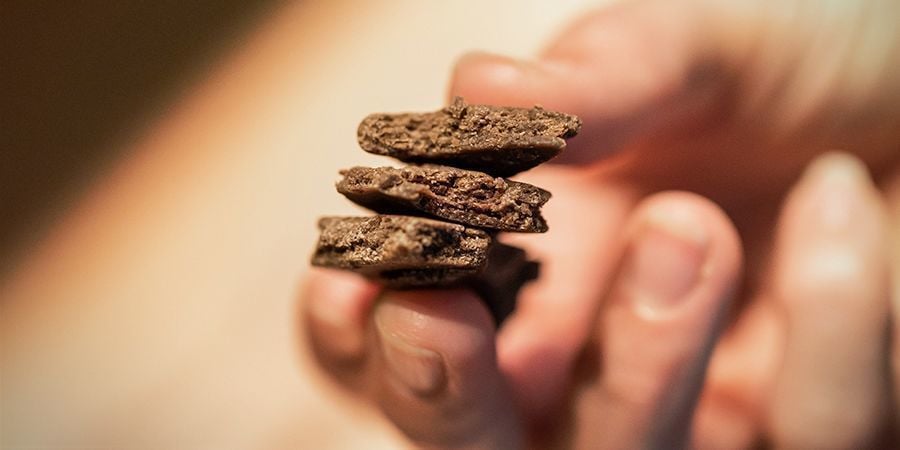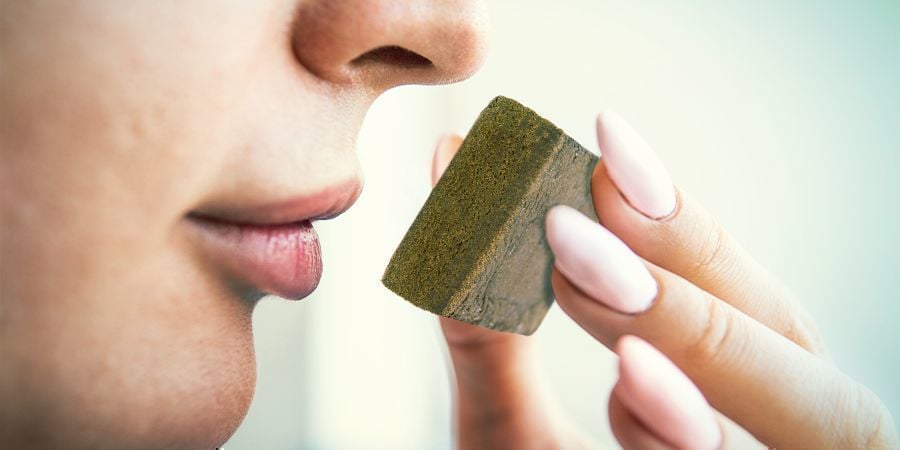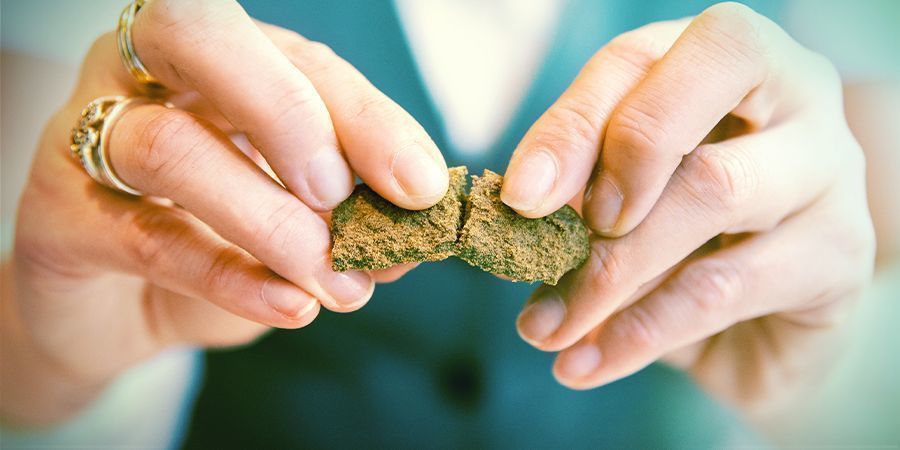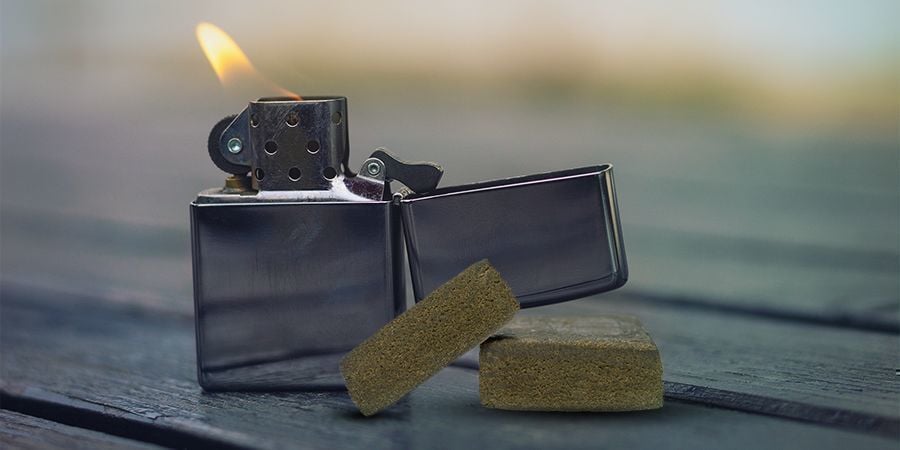
How To Recognise High-quality Hash
How do you know if your hash is of the best quality? And, what separates great hash from the terrible? All of these questions will be answered, and more. With our guide, you will be a hash pro in no time.
Hand-rubbed, dry-sift, or bubble? Where exactly do you start when looking for high-quality hash? It can be a tricky and confusing process for the ill-informed, however, this guide will break down the different types, and what signs (and smells) to look out for when searching for that next batch.
WHAT EXACTLY IS HASH?

Before we discuss the different types available, let’s gain a common understanding of what hash is. Hash (or hashish) is made from dried resin glands taken from the flowering tops of female cannabis plants. These resin glands are known as “trichomes”. Through means of collecting by hand, by machine, or by submerging the cannabis into icy water, these trichomes are removed to form a mass of resin. This resin, however collected, can then be pressed into a block, coin, or ball—not only to be smoked or vaped, but used in cooking as well.
THE SMELL OF HASH

So, how do we find quality hash? The first and most common quality indicator is the smell. Now, not every shop is going to let you press your face against every block of hash in there to get a good, long smell (and for good reason!), but the smell will be your clearest indicator of quality. High-quality hash will smell fragrant and aromatic, whereas hash of low quality may have a distinct mouldy or musty aroma. Conversely, hash that gives off a harsh plastic smell should also be avoided, as this is a clear sign of contamination or potentially harmful cutting agents.
DIFFERENT TYPES OF HASH PRODUCTION
Smell is not the only way to determine the quality of your hash. As there are several different methods of production, this can have an effect on its shape, colour, and texture, with each method having its own distinctive features.
HAND-RUBBED HASH

As the name suggests, this is a method in which the trichomes are collected by rubbing cannabis buds between the hands. The resulting resin is then formed into small spheres. Because it is rubbed by hand, this gives the hash a smooth texture that can be slightly sticky to the touch. High-quality hand-rubbed hash is often black or dark brown in colour on the outside, and light brown with some flecks of green on the inside. If the inside is excessively green, this can indicate there is additional plant residue present, meaning this is hand-rubbed hash you definitely want to avoid.
When touching the hash cold, it should feel solid; once warmed, it will be a little more pliable and soft. If the hash is really sticky, this can mean that additional oils have been added to increase the overall weight of the lump. A further sign that it is not of good quality is the presence of a white, fuzzy mould. This means that the hash has not been dried properly, indicating a poor product that should definitely be avoided.
DRY-SIFT HASH

This is arguably the most common and popular form of hash found in coffeeshops. This method involves sieving dried buds, allowing the trichomes to be removed with ease. The resulting powder is known as “kief”. Good-quality kief is usually brown in colour, but it can be darker depending on how it's pressed. The texture is also characterised by the method of pressing.
When assessing the quality of dry-sift hash, look for a light, sandy colour and crumbly texture in a lightly pressed block. A high-quality heavily pressed block will be darker in colour, have a shiny appearance, and be much harder to the touch. It is also important to note that some dry-sift hash, usually of Lebanese origin, will appear much darker and red in appearance.
Dry-sift is clearly a popular choice amongst consumers as it is able to melt and vaporize entirely.
BUBBLE HASH

Named so because it tends to bubble when dabbed, bubble hash is the result of a production method fairly different from the previous ones. Bubble hash is produced by initially submerging the plant in icy water. The trichomes are then extracted from the plant via multi-layered sieving, removing any unwanted impurities from the collected resin. Since no chemicals are used in its production, bubble hash is a much healthier and appealing option for those who are conscious of their hash production methods.
When looking for quality bubble hash, it is important to note that it can either be bought in a pressed or unpressed form. Pressed bubble hash will vary in appearance from light to dark brown, with a soft but sticky texture. Non-pressed will be in a crystal-type powder form, similar to that of lumpy brown sugar. Lower-quality bubble hash, while looking similar, will be different in texture. If it is hard to the touch, this can indicate more plant matter.
THE BUBBLE TEST

Now that we have an understanding of the different types of hash available, and a brief overview of how quality can be determined, there is another method of how to recognise quality, known as “the bubble test”.
This is a simple but effective method of checking quality. Take a small piece of hash and set it alight. This will often tell you all you need to know about the quality, where sight/smell may not have. If it is of good quality, you will notice the hash start to bubble once lit. Higher-quality hash will take on a clean flame and burn much quicker. If the hash has blackened after this test, this can indicate that potential contaminants have been introduced to the hash. If the hash does not bubble, this can be a sign of a contaminated and poor-quality product. If it bubbles too quickly, this indicates there have been oils added. Some manufacturers will add oils to cover up an inferior product.
Now that you have a clearer indication of the types of hash available and the ways to spot quality, you should have no trouble finding great hash.
-
 7 min
21 November 2024
The 6 Best Ways to Make Hash
Hash production is pretty simple when you get down to it, so here are six ways you can turn your cannabis plants into this globally renowned concentrate. A world of hashish awaits!
7 min
21 November 2024
The 6 Best Ways to Make Hash
Hash production is pretty simple when you get down to it, so here are six ways you can turn your cannabis plants into this globally renowned concentrate. A world of hashish awaits!
-
 6 min
10 October 2023
How To Smoke Hash
Who can resist some potent and delicious hash? In this guide, we look at all the different ways you can smoke, vape, and dab hash, from the more traditional methods of rolling a joint and using a...
6 min
10 October 2023
How To Smoke Hash
Who can resist some potent and delicious hash? In this guide, we look at all the different ways you can smoke, vape, and dab hash, from the more traditional methods of rolling a joint and using a...
-
 7 min
31 March 2022
How To Make Bubble Hash (3 Methods)
Bubble hash is a potent cannabis concentrate. Luckily, there are some easy methods you can use to make it at home with supplies you can find in most kitchens. Now you can enjoy hash without...
7 min
31 March 2022
How To Make Bubble Hash (3 Methods)
Bubble hash is a potent cannabis concentrate. Luckily, there are some easy methods you can use to make it at home with supplies you can find in most kitchens. Now you can enjoy hash without...
-
 5 min
28 December 2019
Top 10 Best Hash In Amsterdam
Hash is a delicacy in the world of cannabis. In this article, we'll show you where to find the best in Amsterdam.
5 min
28 December 2019
Top 10 Best Hash In Amsterdam
Hash is a delicacy in the world of cannabis. In this article, we'll show you where to find the best in Amsterdam.





 United States
United States











